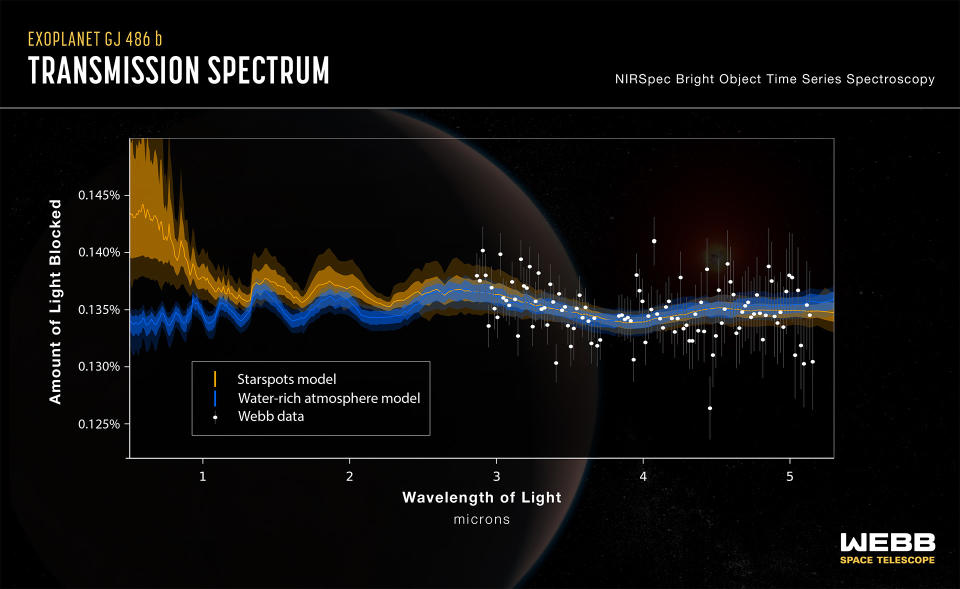Webb discovered water vapor around a rocky planet that shouldn’t have an atmosphere

If you purchase an independently reviewed product or service through a link on our website, BGR may receive an affiliate commission.
The discovery of water vapor in space around a planet that isn’t inside of its star’s habitable zone has scientists questioning everything we know about how planets maintain their atmospheres.
According to a new paper featured in The Astrophysical Journal Letters, the James Webb space telescope discovered water vapor around a rocky planet close to a red dwarf star. The planet itself, known as GJ 486 b, is too close to its planet to have an atmosphere — at least based on what we know.
Today's Top Deals
Apple’s $350 Beats Studio3 headphones just hit $169, but they’ll sell out soon
Apple’s 10.2-inch iPad is down to $269.99, the lowest price of 2023
However, the discovery of this water vapor in space could change all that, especially if it is from the rocky planet itself. Red dwarf stars like the star that GJ 486 b orbits are the most common. As such, rocky planets that can support life are more likely to be found orbiting these small stars.

However, these stars are relatively cool, compared to other stars. Which means the habitable zone for the star is very close to it. And, because red dwarf stars are very active when they’re younger, they release a lot of radiation, which should destroy the atmosphere of any planet too close to the star.
GJ 486 b’s proximity to its star is what have scientists so baffled by the discovery of water vapor in space, possibly on the rocky planet. Because if water vapor exists on the planet, then that suggests that it has an atmosphere, despite being so close to the star and having a surface temperature of over 800 Fahrenheit.
This is where things get tricky because it’s possible (and even more likely, astronomers say) that the water vapor discovered in this region of space is actually from the star. NASA says that even our Sun is known to have water vapor appear in its sunspots at times; as such, it’s possible Webb could be picking it up from the star in the background.
But there’s also that minute possibility that the water vapor is located within an atmosphere surrounding GJ 486 b, and that this discovery could challenge everything we know about exoplanets, their atmosphere, and how likely a star is to destroy that atmosphere if it is too close to it.
Don't Miss: Today’s deals: $20 Echo Dot, IHOP gift card deal, Samsung Galaxy A54 for $375, more
More Top Deals

